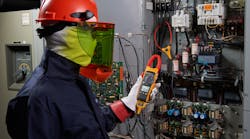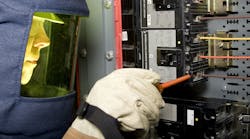Compliance, safety, reliability, productivity, and more are all key to running an efficient electrical facility. If equipment is not in compliance with industry standards, it could cost businesses significantly, both in terms of revenue and reputation. For example, if the equipment isn’t consistently monitored and maintained, it could cost a business more than $27 billion each year during a power outage, according to a recent E Source report.
When it comes to modern plant management, there are a number of things to consider. Risk assessments, equipment modernization, and data analysis are a few ways that facility managers and staff can ensure their facilities are operating in tip-top shape. Here's how to ensure you are monitoring your equipment for effective plant management and that you're maintaining and modernizing equipment as needed.
1. Planning the risk assessment:
There’s more that goes into a risk assessment than walking the facility floor and finding what equipment needs servicing or replacement. One of the first steps a facility manager takes is identifying an experienced, professional electrical engineer that is familiar with a number of electrical distribution systems and compliance codes and standards. In addition to identifying these engineers, facility managers should make the assessment process simple and safe by clearing debris and giving engineers access to equipment to make the assessment as seamless as possible.
2. Conduct a risk assessment:
The assessment itself will differ depending on the equipment being inspected. Power class transformers, distribution class transformers, service equipment, new installations, and more will have different considerations for the engineers to look over. To perform the most accurate assessment, engineers should have the most recent one-line diagram demonstrating where to begin the assessment process. They should also familiarize themselves with the physical location of significant electrical equipment. In addition, they need a basic understanding of the normal electrical operations characteristics, building construction and layout, and equipment limits as well as electrical codes and compliance standards.
3. Incorporating data-enabled technology:
Most of today’s technology is centered around a critical element: data. Data can indicate where certain equipment may cause a power disruption, having an effect on a facility’s reliability. In today’s facilities, electrical equipment can come equipped with technology that offers communication and power monitoring capabilities connected through the IoT. Depending on where the equipment sits within the full electrical system, it may benefit from having thermal sensors, partial discharge monitoring, humidity monitoring or other services built into it to alert facility managers and staff to what may need servicing or upgrading. These capabilities allow for remote monitoring that enables customers to plan for maintenance and avoid safety-related issues or material degradation, and can even enhance the reliability of aging equipment.
4. Upgrade with direct replacements:
A direct replacement modernization solution is one of several effective measures that can be taken to make electrical systems more current. These upgrade solutions work with both low and medium-voltage circuit breakers and are designed to fit into the existing equipment with little to no modification to the switchgear itself. Direct replacements are an ideal modernization solution because it requires very little downtime on the equipment bus during the installation process, allowing business to continue as usual. In addition, they meet compliance as all direct replacements are designed and tested to meet or exceed IEEE/ANSI C37.59 standards.
5. Upgrade with retrofills:
Retrofills are another option when direct replacement breakers are not able to fit existing switchgear cells and can be modified to accept the new circuit breaker. Unlike using a direct replacement, installing a retrofill would require a longer bus outage. With retrofill solutions, the internal circuit breaker cells need to be modified to accept the new circuit breaker. Retrofills are commonly used instead of direct replacements for larger devices.
Gabriel Arce is the Consulting & Modernization Offer Manager, Field Services, for Schneider Electric.














